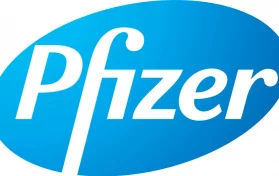
In late 2021, the FDA announced approval of two oral medications that are meant to treat high-risk patients diagnosed with COVID-19. These antiviral oral medications are the next step in the battle against the COVID-19 virus. However, according to the Washington Post, some countries have raised concerns about shortages amid manufacturing supply chains.
Wealthy countries have already purchased much of the supply of treatments that are expected to be available in the first half of 2022. Pfizer’s Paxlovid was approved in late December and Merck’s molnupiravir was approved shortly after. These about being co-developed with Emory University and Ridgeback’s Biotherapeutics.
A report from the World Health Organization earlier this month mentions the possibility of a high risk of shortages for Paxlovid, particularly in low-income and lower-middle income countries until there are generic versions available. This is not expected until mid- to late 2022.
Both Pfizer and Merck have reached deals to share the license for the antiviral pills so that there will be generic versions available in places such as Bangladesh and India. The oral medications are meant to help patients deal with symptoms after they appear, although most countries are still urging citizens to gain some immunity with the vaccines currently available.
Both Pfizer and Merck have shared their licenses with the Medicine Patent Pool, an agency packed by the United Nations. Pfizer and Merck are expected to retain the control of the market for wealthier countries, such as the United States and the United Kingdom.
Adding to the idea that there might be shortages in lower-income countries is the fact that drug manufacturers will need to draw up their manufacturing plans.
In lower-income countries, vaccination rates are not what they are in the United States and the United Kingdom. Many lower-income countries are experiencing vaccine inequality as well as weaker health systems than in the United States.
As of December 2021, only six percent of Africa’s population had been vaccinated. South African countries are the origin of the current variation that is running rampant in the United States, the omicron variant. Although the variant is considered mild compared to previous variants, it is wreaking havoc in the United States as it threatens to disrupt the supply chain once more in America.
In higher income countries, vaccination rates are at least forty percent. Wealthier counties have progressed to where they are now able to provide the booster shot while lower-income countries are still struggling to administer the initial shots to their elderly and front-line workers.
Even though these therapeutics may soon be available to Americans and those in wealthier countries, it is still possible that it could be at least a six-month delay in providing the same medications to those in lower-income countries. Merck has said that they will make their antiviral medication available to those in developing countries royalty-free. However, while Americans are still waiting to get these therapeutics available in America, it may take even longer for those in developing counties.





